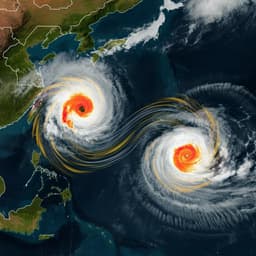
Earth Sciences
The mean state of the tropical Pacific Ocean differed between the Medieval Warm Period and the Industrial Era
S. Jiang, X. Zhou, et al.
Explore the fascinating changes in the El Niño Southern Oscillation (ENSO) over the past 1800 years, revealing how climate periods influenced its mean state and variance. This groundbreaking research by Shiwei Jiang, Xin Zhou, Julian P. Sachs, Zhibo Li, Luyao Tu, Yiyi Lin, Xuanqiao Liu, Anze Chen, and Yanan Shen sheds light on the anthropogenic impacts driving these variations in the tropical Pacific.
~3 min • Beginner • English
Related Publications
Explore these studies to deepen your understanding of the subject.







